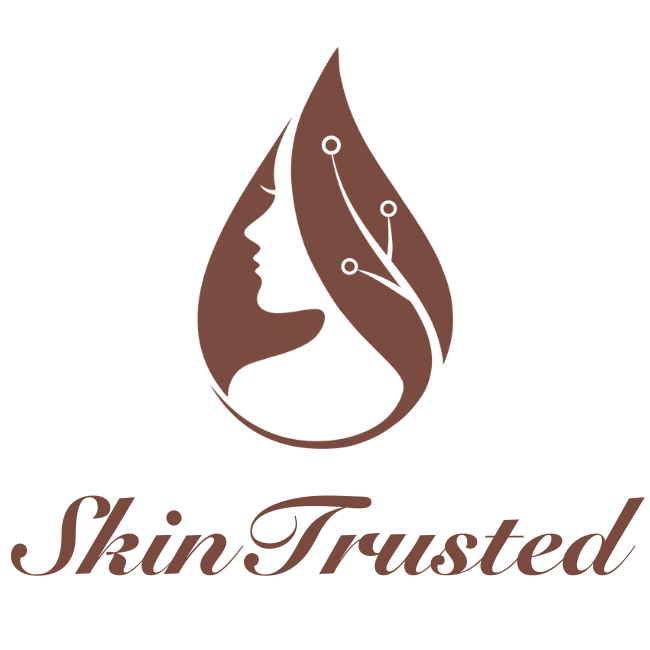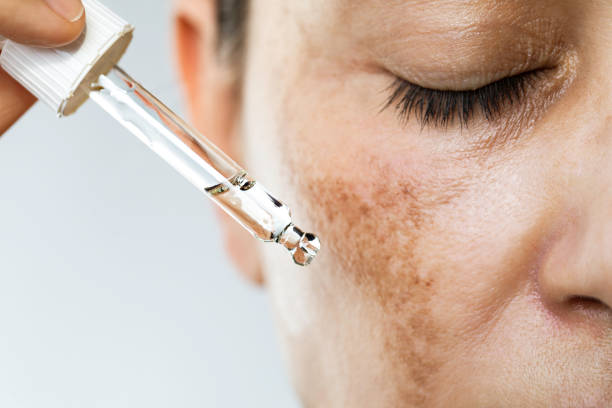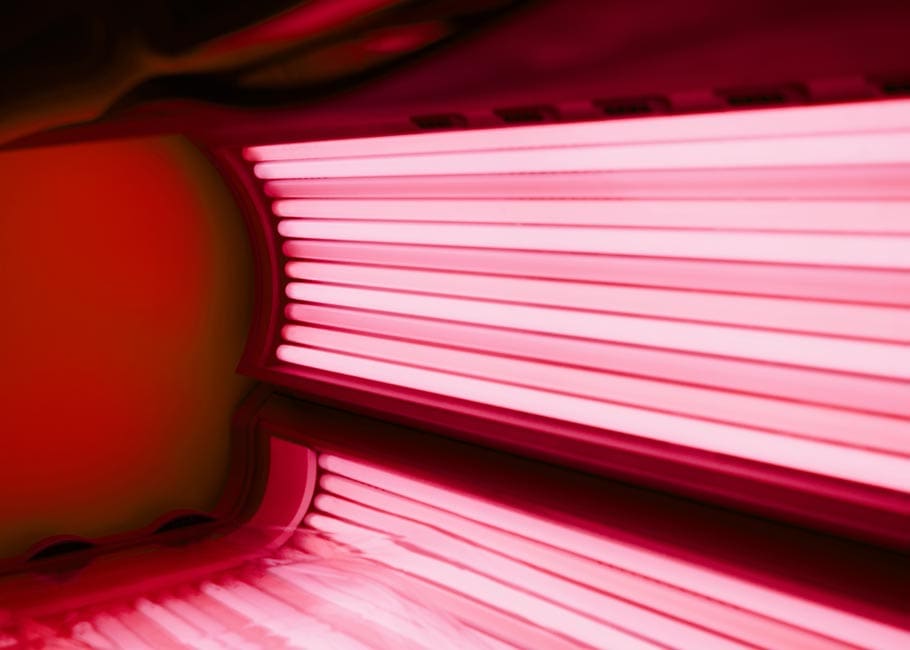HELPS CONTROL:
- Sun damage
- Fine lines and wrinkles
- Scarring
- Rosacea
- Spider veins
- Acne
- Unwanted or abnormal pigment
- Hair removal
PRICE RANGE: Treatments range from $1,000 to $2,500.
AVERAGE DOWNTIME: Minimal downtime. Mild redness, swelling, and flaking may occur temporarily after treatment.
NON-ABLATIVE LASER TREATMENT OVERVIEW
WHAT IT DOES: The non-ablative laser enhances the appearance of various skin conditions by delivering controlled thermal energy to the deeper skin layers without damaging the epidermis. This process not only targets and destroys specific tissues but also stimulates new collagen production, leading to a thicker dermis and improved skin texture and appearance.
WHAT YOU NEED TO KNOW:The ideal candidates for non-ablative laser skin rejuvenation are typically between 35 and 55 years old, showing signs of photo-damage and aging. Older patients or those with significant skin laxity and deep wrinkles may benefit more from ablative laser resurfacing. Non-ablative laser treatments are available for various conditions, including acne scars, skin resurfacing, and rejuvenation, and can be suitable for patients with darker skin tones. However, it is crucial to choose an experienced clinician who can demonstrate successful results on similar skin tones to minimize the risk of unwanted pigment changes.
NON-ABLATIVE LASER RESURFACING FAQS
How does non-ablative laser work?
Both ablative and non-ablative lasers operate on the principle of "controlled wounding," where inducing trauma in the skin triggers a natural healing response. This process leads to collagen remodeling, dermal repair, and the production of new collagen. Non-ablative lasers deliver energy absorbed by intradermal water at a target wavelength, increasing the intradermal temperature and causing thermal injury. This injury denatures collagen and initiates the wound response, resulting in reduced fine lines and wrinkles, improved skin texture, and skin tightening due to new collagen formation and dermal thickening.
Unlike ablative lasers, which vaporize part or all of the epidermis, non-ablative lasers do not physically damage the epidermis. This key difference results in minimal downtime and fewer risks associated with non-ablative laser treatments.
Non-ablative laser energy can be delivered in non-continuous pulses or through a fractional laser, which divides the light into a grid of microscopic columns. Fractional non-ablative lasers create thousands of tiny, deep columns known as microthermal treatment zones, delivering heat into the skin without affecting the surrounding tissue. This method allows for faster recovery and reduces the likelihood of post-procedure complications.
What is the difference between ablative and non-ablative lasers?
Both ablative and non-ablative lasers operate on the concept of "controlled wounding," where inducing trauma within the skin stimulates a natural healing response. This process leads to collagen remodeling, dermal repair, and new collagen production. Non-ablative lasers generate energy absorbed by intradermal water at a specific wavelength, increasing the temperature and causing thermal injury. This injury denatures collagen and triggers the wound response, resulting in reduced fine lines and wrinkles, improved skin texture, and skin tightening due to new collagen formation and dermal thickening.
Unlike ablative lasers, which vaporize part or all of the epidermis, non-ablative lasers do not physically damage the epidermis. This distinction results in minimal downtime and lower risks associated with non-ablative laser treatments.
Non-ablative laser energy can be delivered in non-continuous pulses or through a fractional laser, which divides the light into a grid of microscopic columns. Fractional non-ablative lasers create thousands of tiny, deep columns known as microthermal treatment zones, delivering heat into the skin without affecting the surrounding tissue. This method allows for faster recovery and reduces the likelihood of post-procedure complications.
What happens after a non-ablative laser treatment?
The primary advantages of non-ablative laser treatments include minimal downtime and quick recovery. Although the skin may appear pink or flaky after resurfacing, non-ablative lasers do not damage the top layer of skin, allowing makeup to be applied immediately after treatment. Any swelling or redness typically resolves within three days, and cold compresses can help reduce discomfort following the procedure.
While skin renewal begins within 24 hours, patients should keep the treated area well-moisturized and apply sunscreen to prevent post-inflammatory hyperpigmentation. Those with darker skin tones may be prescribed creams with pigment inhibitors like hydroquinone. The results of laser skin resurfacing are usually noticeable quickly but will continue to improve over several months after the non-ablative laser treatment.
What does non-ablative laser treat?
Since non-ablative lasers do not remove the top layer of skin, they may be less effective for deep skin resurfacing compared to ablative lasers. However, non-ablative lasers offer several skin rejuvenation options without the downtime and complications associated with the more powerful ablative lasers, making them the preferred choice for treating mild photoaging in patients aged 30 to 55.
Among various facial laser treatments, non-ablative lasers are particularly effective for addressing vascular conditions related to aging, such as rosacea, telangiectasia, and generalized redness. Additionally, non-ablative lasers can improve acneic conditions by reducing sebum secretion, minimizing post-inflammatory hyperpigmentation, and enhancing the appearance of atrophic and hypertrophic scars.
Is laser resurfacing painful?
The discomfort experienced during laser treatments for the face or body varies based on the treatment area, the type of laser used, the duration of exposure, and the patient's pain threshold. For some devices, it's essential for patients to communicate any discomfort to the provider to prevent unwanted epidermal injury, in which case the use of anesthesia is not recommended.
Typically, a non-fractional, non-ablative laser treatment includes the application of topical anesthesia before the procedure. Additionally, cool air devices or ice packs may be used to alleviate discomfort and reduce swelling immediately following the treatment.
Non-fractional, non-ablative lasers may cause more discomfort compared to fractional non-ablative lasers. However, advancements in laser skin resurfacing and rejuvenation have greatly improved the patient experience, resulting in minimal discomfort during and after the procedure.
How deep do non-ablative lasers go?
There are numerous types of non-ablative lasers, each with varying wavelengths, pulse durations, and fluence (energy delivered per unit area). These factors influence the laser's effectiveness. The optimal depth of a non-ablative laser treatment depends on the target area within the skin. For example, treating superficial conditions like photo-induced pigment requires less depth, while addressing deeper issues like acne scars may need more intensity. Fortunately, non-ablative laser devices allow physicians to adjust the pulse duration and fluence, providing customizable options for skin resurfacing and rejuvenation.
How long does non-ablative laser resurfacing last?
The human body functions as a complex biological system that continuously adapts to external stimuli. Lifestyle choices such as nutritious eating, regular exercise, and responsible sun exposure profoundly influence the long-term effectiveness of non-ablative laser resurfacing. While ablative lasers are considered the most efficient for skin rejuvenation, multiple sessions of non-ablative laser treatment have demonstrated comparable outcomes. This highlights the versatility of non-ablative lasers, as they typically entail minimal downtime and discomfort unlike ablative lasers. Upon achieving the desired results, a series of non-ablative laser skin rejuvenation treatments can maintain these outcomes for 3-5 years, contingent upon various factors as previously discussed.
Is non-ablative laser safe?
Assuming the patient is deemed suitable for non-ablative laser treatment, the procedure is notably safe, boasting fewer post-treatment complications compared to more potent ablative lasers. Moreover, since non-ablative laser sessions can be conducted in a series, remarkable skin rejuvenation results can gradually unfold with minimal downtime and reduced risk.
*Always consult your physician before undergoing any procedure
**Follow all product use instructions and warnings
***If irritation occurs, discontinue use; if irritation persists, consult your physician



